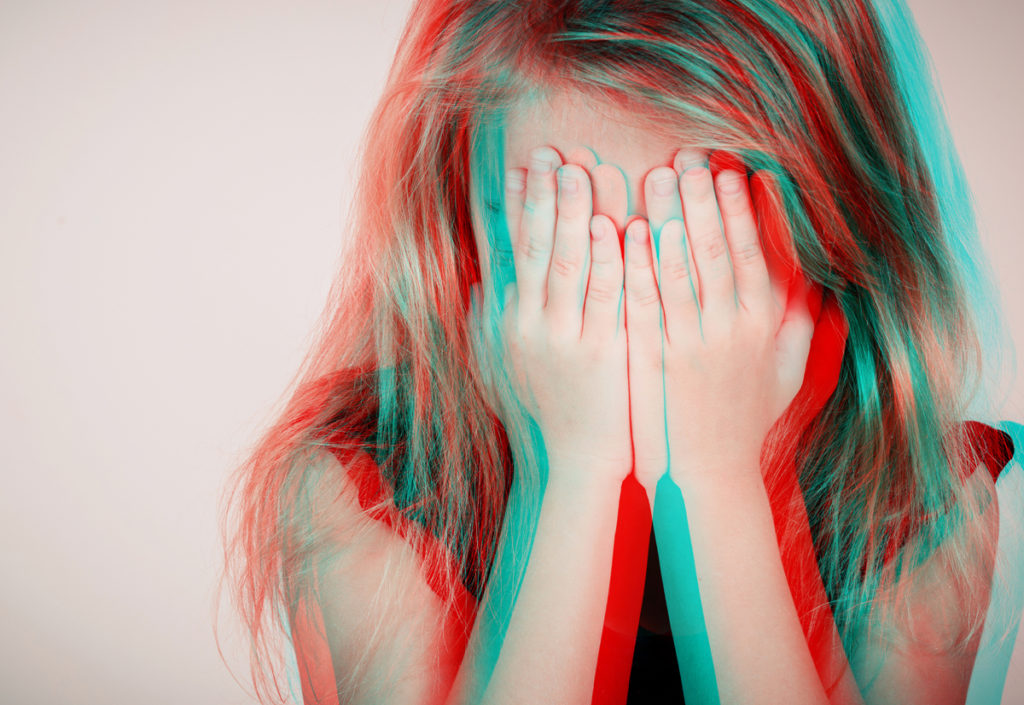
We live in a quickly changing world and sadly one of the consequences is the rapid increase of anxiety in children. As parents it’s easy to think of our children as carefree and innocent; we forget they can struggle with the same emotions as we do and we overlook how difficult the modern world is on their developing mind. Even as an adult I struggle to keep up with the pace of technology and I often myself overwhelmed by the world I live in. How could a child possibly be well adjusted in our fast-paced culture. Stress and anxiety in children affects approximately 4.4 million in the U.S. between the ages of 3 to 17.
All children will experience some degree of anxiety, especially during certain stages of development. It’s normal for them to have feelings of uncertainty because so much is new to them. When it interferes with their day to day activities or school work it may be a sign of something more serious than what is typical anxiety. Mental health-related disorders among children can be interpreted as serious changes in behavior, how they handle their emotions, and how they learn.
It isn’t always easy to recognize signs of anxiety disorder apart from what is normal in a young child. It’s common for children to have tantrums from time to time or fear new things like starting school or making new friends. Based on surveys conducted by the American Psychological Association an alarming number of parents were unaware of children’s anxiety. Unfortunately, anxiety and depression has reached epidemic levels in kids and young adults. The pandemic has been a trigger point and has magnified an already existing problem
Normal reactions to fear or stress such as watching something scary or starting a new school are temporary. They typically last a short period of time and may be consolable. With anxiety disorder children become distressed or uncomfortable in a way that reassurance from a parent or caregiver does not suffice.
You may have told yourself or had others tell you they will grow out of it. In children who experience an anxiety disorder, however, these symptoms don’t just go away over time. It can bring on distress and cause major problems for them just getting through the day. Anxiety in children can affect their success in school as well as building healthy relationships. Left untreated anxiety can cause problems that carry through to their adulthood and lead to other mental health issues.
Signs To Look For : Anxiety in Children
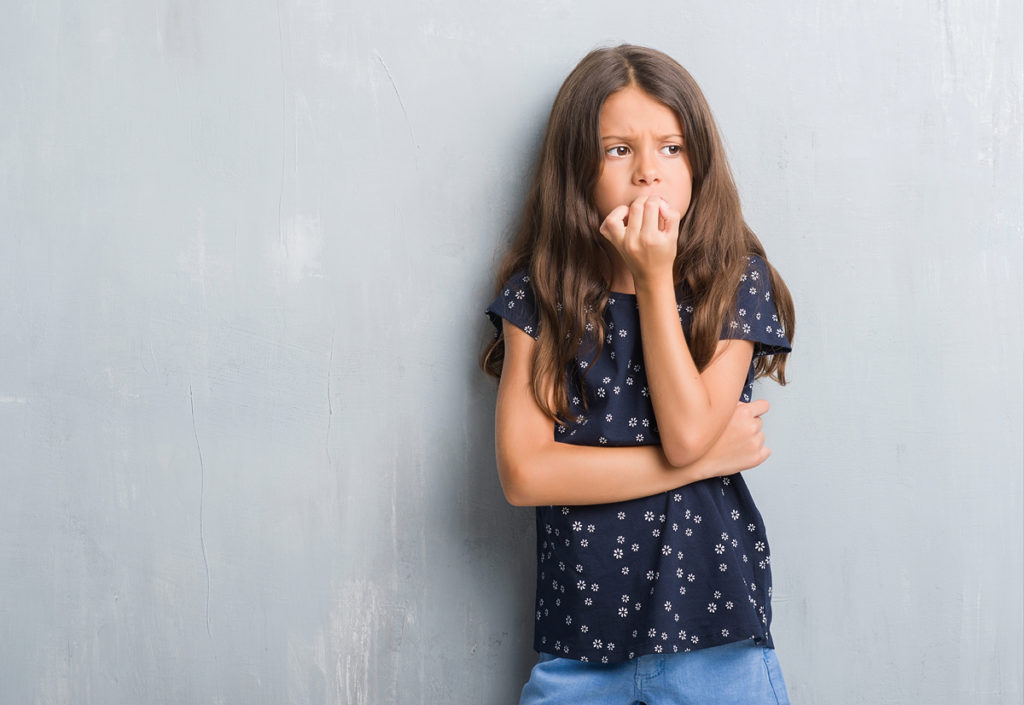
A child won’t tell you they are feeling anxious because they can’t isolate their feelings as this one emotion. They may ask frequent ‘what if’ questions regarding their fears such as ‘what if there’s a fire’ or ‘what if something happens to you.’ They may tell you they have a stomach ache or a headache or feel fatigued. Signs of anxiety in children are often associated with intense fear about a specific thing, event, or place and may present physical symptoms. These fears and feelings do not dissipate with simply providing a logical explanation. Common indications of anxiety include:
- Difficulty falling asleep, staying asleep or frequent disruptions from nightmares
- Easily becomes irritable or angry
- Not engaging in activities with others
- Refusing to go to school
- Difficulty concentrating on things or staying focused
Your child’s teacher can be a good communicator on your child’s well-being. Teachers and school personnel are great observers and may notice sudden changes in behavior or performance at school. A parent may be surprised to learn that their very talkative child is unusually quiet at school or may refuse or avoid speaking during class. Encourage open communication with your child’s teacher and attend regular meetings to address your child’s performance in school. Observing sudden changes or identifying concerns can be very beneficial in addressing a deeper issue your child could be struggling with.
Types of Anxiety in Children
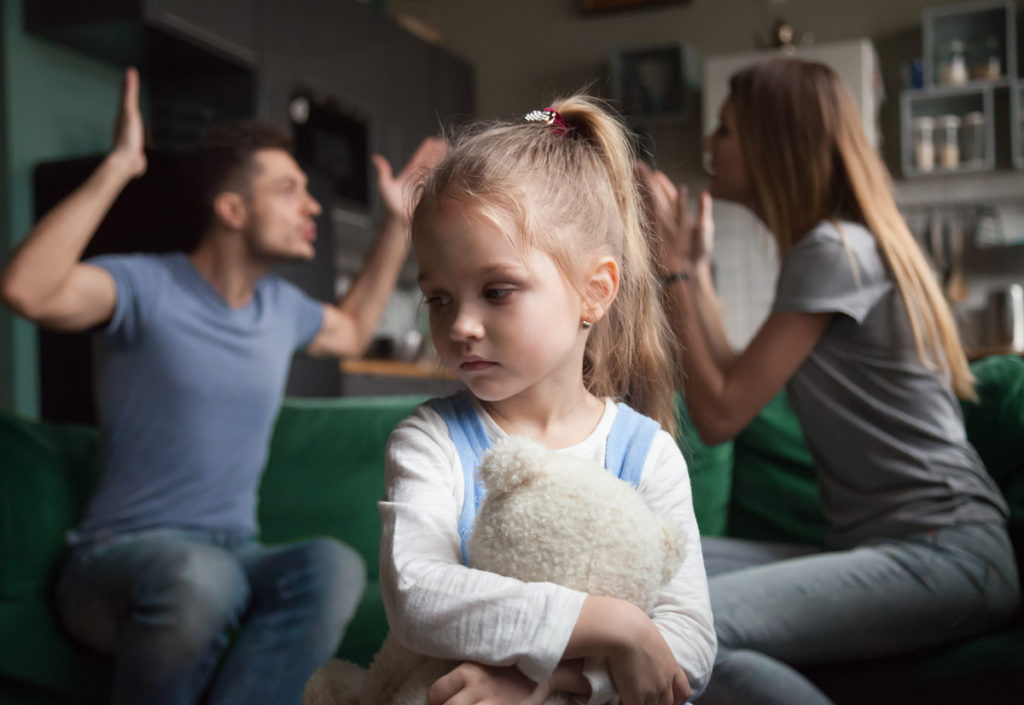
There are many different forms of anxiety children may experience. Separation anxiety and social anxiety are the most common. It is normal for children to experience separation anxiety between the ages of 18 months to 3 years. This is a normal developmental stage of young toddlers when they have an attachment to their parent or caregiver and react out of fear when they are separated, even for a short period of time. The fear generally subsides after a short time as they become distracted by something else. When this reaction carries on into school-age years and becomes problematic for children any time they leave the house it can be cause for concern.
Separation anxiety disorder affects approximately 4% of children and is usually diagnosed between the ages of 7 and 9 years. It occurs in children who are older and have difficulty leaving home or being with a caregiver. They may take much longer to calm down than other children. They experience severe homesickness and may feel the need to have someone stay with them at bedtime.
Signs of separation anxiety may look like this:
- Constantly fearing over the safety of their parent or caregiver
- Becoming worried or fear over sleeping away from home
- A tendency to cling to their parent or caregiver
- Not wanting to go to school
- Experiencing panic attacks or tantrums when separated from parents
Social anxiety in children typically occurs as they become older. They might experience fear or intense nervousness specifically in an environment where they are around others. The fear of being judged or observed can cause them to become overly self-conscious. Children with social anxiety might fear going to school or being in situations where they might be called out such as speaking up or reading aloud in front of the class.
Signs of social anxiety may look like this:
- Fear of meeting new people or talking to people
- Very few friends outside of family
- Avoiding situations where they are around people such as social events or public transportation
- Often appear isolated from groups
- Speaking softly or mumbling
In severe cases of social anxiety children may develop what is called selective mutism in which a child refuses to speak outside of places where they feel comfortable. In situations where they are expected to talk such as in school they may refuse to speak or avoid talking. Other signs include standing motionless without expression, hair chewing or twirling, or avoiding eye contact with peers or adults. This can cause problems in school and making friends.
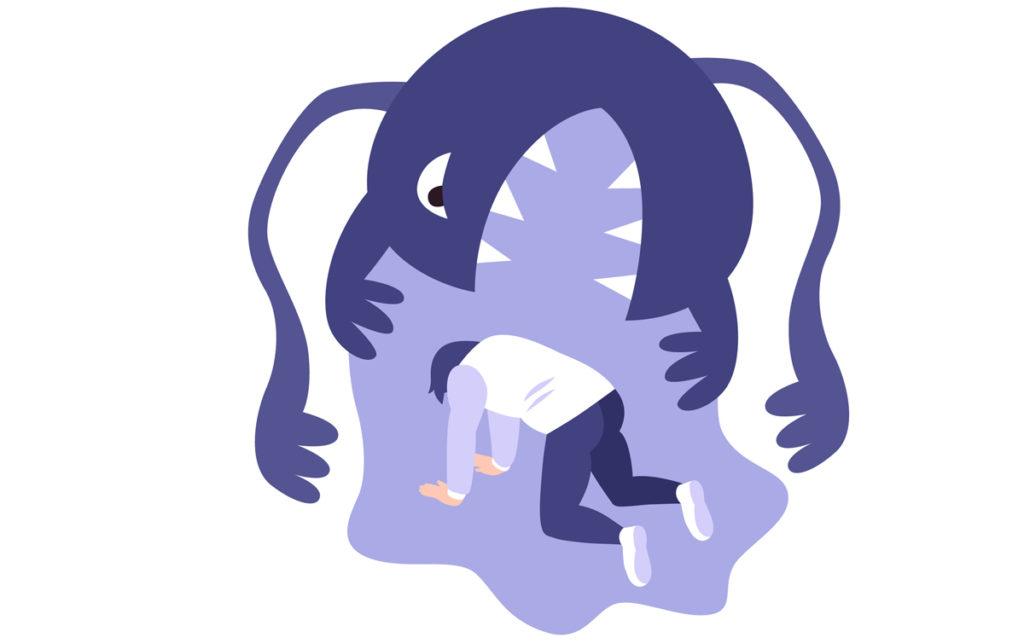
Anxiety can also take on the form of a phobia or panic attack where it manifests as an intense fear of something specific or a particular situation. This irrational fear can cause them to become seriously distressed and interfere with normal activities. Panic disorder is characterized as having a minimum of two severe attacks which occur without warning and followed by fear or worry for up to a month or longer about it occurring again. Panic attacks present as 4 or more physical symptoms including:
- Rapid heartbeat
- Shortness of breath
- Trembling
- Feeling the need to escape
- Chest pain or discomfort
- Dizziness or becoming lightheaded
- Chills or hot flashes
- Abdominal discomfort or nausea
- Sweating
- Feeling imminent danger
- A feeling or sense of things being unreal
- Fear of dying
In younger children reaction to phobias can cause anxious feelings that may present in the form of tantrums, crying, and clinginess. Children can not recognize their fear as being irrational and may avoid situations where they might encounter them such as refusal to go outside due to phobia of dogs or insects.
Generalized Anxiety Disorder is the opposite of social anxiety or phobia in that it isn’t limited to a specific environment or factor. This disorder manifests as excessive worry over any scope of life such as their home, family, friendships, school work, health, and even natural disasters. Generalized anxiety can cause excessive worry over things before they happen or lead to repetitive thoughts and actions (Obsessive compulsive disorder.) Physical symptoms that occur with generalized anxiety disorder include:
- Irritability
- Restlessness
- Fatigue or having difficulty sleeping
- Difficulty staying focused
Children with GAD tend to be hard on themselves and strive for perfection. They may feel a constant need to find approval or seek reassurance from others.
Obsessive Compulsive Disorder is a form of anxiety that manifests as repeated actions or compulsions and intrusive thoughts that become obsessions. This disorder generally causes constant worry and irrational fear over things such as dirt and germs, losing something valuable or harm coming to someone they love. This disorder can develop in children as young as 3 years of age but is typically diagnosed in children around 10 years old. Obsessive compulsive disorder commonly coexists with other anxiety disorders. Characteristics of OCD in children include (but not limited to) the following:
- Frequently washing hands and rewashing to prevent germs
- Arranging things in a particular order
- Repetitive behavior in activities, saying phrases or names
- Holding on to things with no value; hoarding
- Frequently counting things such as steps
- Seeking perfection in doing things until they’re just right
Post Traumatic Stress Disorder can develop in children after directly experiencing some type of traumatic event. Children who have experienced abuse, a violent assault, been in a serious accident, experienced loss of a parent or someone close, or survived a natural disaster may develop Post Traumatic Stress Disorder. It’s normal for a child to feel fear or sadness following such an event, but it’s usually short-lived and they recover after a short period of time. PTSD can develop weeks to months following the event and can disrupt their daily activities. This disorder can bring on intense fear or re-living the event through nightmares, experiencing flashbacks or through play by re-enacting the event. They may worry or fear the event occurring again. Signs of PTSD in children may include:
- Difficulty sleeping or staying asleep; frequent nightmares
- Difficulty concentrating
- Nervous of their surroundings
- Jumpy around loud noises
- Disengaging from friends or family
Why is anxiety in children so common?
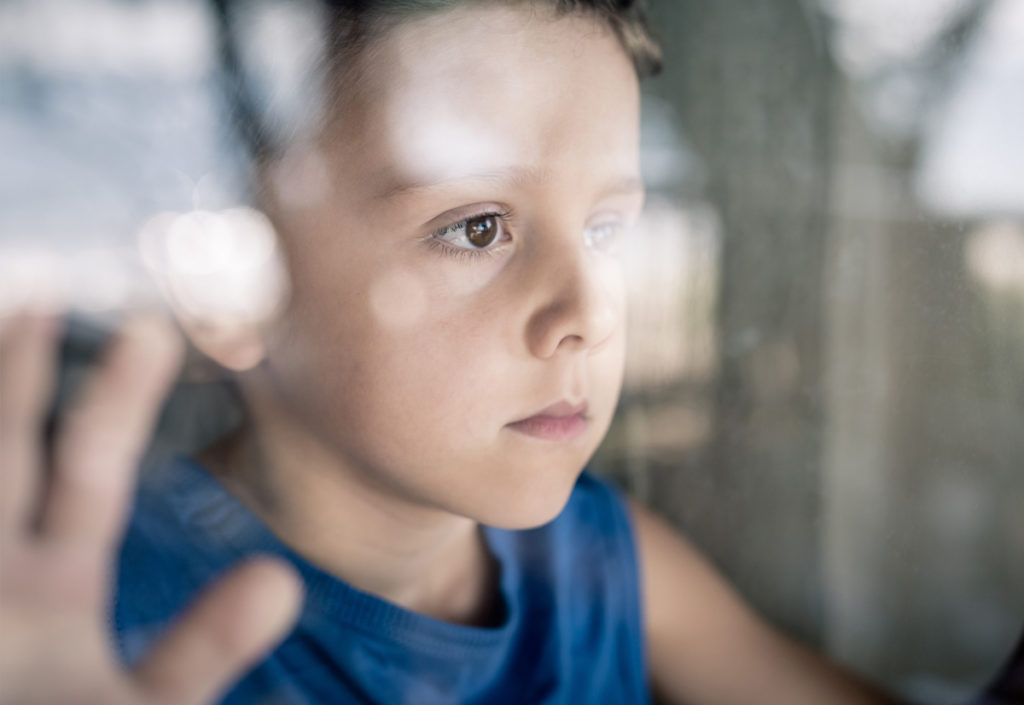
It is estimated that 1 in 8 children struggle with anxiety today. According to the Centers for Disease Control and Prevention, the average age that it becomes prevalent is around 11 years. While there are a number of contributing factors that can cause anxiety, one of the most significant is the influence of technology. Screen time has taken much of our daily lives through various platforms from our mobile devices, TV, and even at work and school. Modern technology is commonly being used in classrooms in place of traditional learning methods. While it does offer some advantage, it also comes at a mental expense. With shortened recesses, increased curriculum’s and busy schedules, children are not given the same opportunities as our generation to decompress and create supportive relationships.
Among children between the ages of 3 to 18 years, a 2015 study confirmed 94% had computers in their homes.
This era of technology also feeds into social anxiety among adolescents by way of supplying a different meaning of social acceptance. Children at an early age become exposed to new possibilities for social comparison, exclusion and bullying. As they become older they become more versed in social media because social media never stops. There are studies which showed an increase in a child’s sense of isolation as a result of exposure to social media.
Another concern that may be a leading cause of anxiety for children and teens is the concern for safety. Higher environmental threats were indicated as one of the leading contributions to anxiety based on studies published by the American Psychology Association. Media coverage has also influenced our perception of those threats including crime and fear or diseases.
There are far more uncertainties and things parents worry about today than our parents or grandparents did when they were children. One or two generations ago children had more freedom to ride their bikes a few blocks from home to a friend’s house. Summers were spent outdoors and the only thing you had to worry about was making sure you were home before the streetlights came on. You can’t do that today even in a remote town due to fear of your child being taken or something happening to them no parent wants to think about. Today’s generation doesn’t have those same freedoms we may have had.
Likewise, being too overprotective can have its consequences on how our children cope and develop skills in problem-solving. A parent’s own anxieties can carry on to their children as they become more aware of worrisome issues around them. There is no doubt there are many real dangers to take caution, but there are circumstances where children need to have the opportunity to learn how to deal with certain threats around them.
There are many factors that can affect children to develop anxiety and their overall mental health. Some children may be more prone to developing anxiety due to a behavioral inhibition they are born with. They may come off as overly shy or timid and do not willingly explore new experiences or environments they might feel threatened by. Experiencing a traumatic event, mistreatment, bullying, and even frequent exposure to conflict can all contribute to emotional disorders. When a child’s sense of security feels threatened by these factors they can develop anxiety disorder.
A parent’s reaction to their child’s temperament could influence the development of anxiety. The people that are frequently present in a child’s life can allow anxiety to set in based on their actions. Parents or caregivers that have trouble with the law, relationship problems, or frequently struggle with managing their own life could manifest as concerns or issues your child feels.
Learn More : What’s the difference between stress and anxiety?
Strategies for Treating Anxiety
There are various forms of treatment available for anxiety in children. It may seem natural as a parent to accommodate your child’s needs around their anxiety, but this isn’t beneficial for them. Avoiding situations or things that may provoke their fear can result in more problems later where it can’t be avoided. They need to learn constructive ways to handle their distress in a healthy way. The key is to seek treatment early on to equip them with the tools to cope and manage their emotions in the world around them. Anxiety disorder is not something they will just grow out of. Unresolved anxiety that carries on into their early teens and adulthood can cause significant problems with everyday life.
Cognitive Behavioral Therapy
This form of therapy has been proven to be the most effective form of treatment over other forms such as pharmaceutical approaches. Cognitive behavioral therapy, also known as CBT, is a form of talk therapy. It is widely used in the treatment of various mental health-related issues including depression, PTSD, and OCD in addition to anxiety. In CBT children talk to a therapist, allowing them to find and identify the root cause of their anxiety. These talk sessions generally last about 12 weeks and the benefits are long-lasting.
Children learn strategies and skills they can use to help reduce their anxiety and manage their fears. They learn how to replace negative thought patterns with positive thinking and behavior. The therapist will typically assign ‘homework’ for them to practice these skills at home. Support from parents and caregivers is essential to the success of your child’s progress. Your child’s therapist can discuss these practices and offer advice on how to support your child through managing their symptoms. Over time you should notice positive changes in their behavior when approaching situations they previously feared.
In social anxiety or phobias, exposure therapy may also be implemented through CBT. This form of therapy gradually introduces an element that brings on fear in a safe setting. This therapy helps them learn how their perceptions of the threat that signal those distress feelings are not real. Exposure therapy is performed over a gradual period until they no longer have a reaction to it.
Attention Bias Modification Therapy
Research has shown that children and adults with anxiety are more tuned into the negativity in their environments such as upset or angry faces over the positive elements that are present. This invokes a reaction of fear. Attention bias modification therapy is performed over brief sessions where children are shown photos with actors depicting distinct facial expressions. This form of therapy helps children and adults retrain their attention from the threat that brings on their anxiety.
Acceptance and Commitment Therapy
This is a form of therapy which is often used in anxious children and teens through mindfulness to overcome fear, panic, and worry. Acceptance and Commitment therapy uses techniques on acceptance by teaching effective strategies for living in the moment without judgement in various experiences. Children learn how to cope with their feelings, sensations and unwanted thoughts.
Medication Therapy
Cognitive therapy isn’t always effective alone for treating anxiety disorders. A doctor may prescribe medication known as selective serotonin reuptake inhibitors (SSRIs) or serotonin norepinephrine reuptake inhibitors (SNRI). Studies have shown great effectiveness in the use of medication in addition to CBT for children between the ages of 7 to 17 years. The need for medication will be determined based on a clinical need by a doctor. Based on the severity of your child’s anxiety disorder, medication therapy may be used over a short period of time or as a long-term treatment. Your child’s doctor or therapist will assess their progress and determine the duration of the course of medication based on how well they respond to treatment. Always discuss any other medications, including over the counter medications your child is taking before starting medication therapy for anxiety. Mention any concerns you have regarding the medication and potential side effects or what to look for. Once your child has started medication treatment you should follow the dosage recommendation and do not stop treatment unless directed by your physician. There may be adverse reactions if a medication is stopped abruptly.
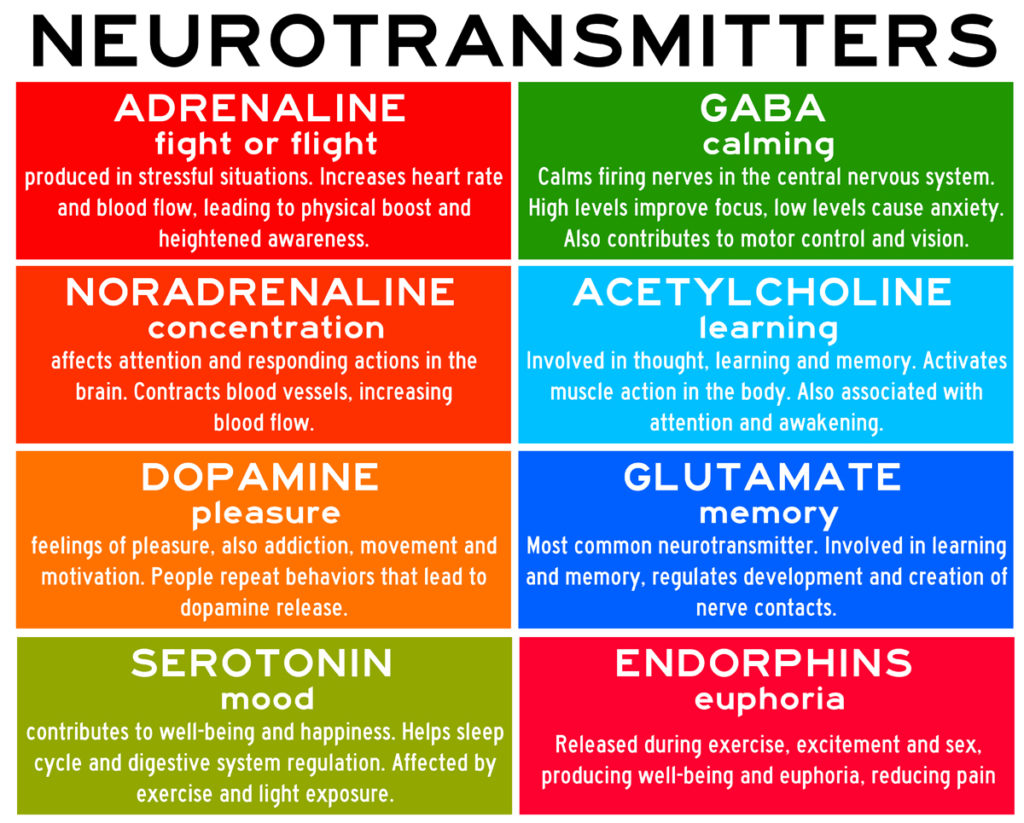
Most children typically show signs of improvement within 2 to 6 weeks of receiving treatment regularly. Keep in mind that some methods may not work the same for everyone and it may take a little longer in some cases for progress to be made. If you don’t see an improvement in your child’s behavior or how they respond to anxiety, speak to your child’s doctor or therapist about your concerns. Discuss other potential forms of therapy they might recommend. Don’t be afraid to seek a second opinion or find another therapist if you feel your child isn’t getting the help they need or feel your concerns are not being heard.
How Can I Help Alleviate Anxiety in My Child?
Parents and caregivers can be a vital element in helping children overcome their fears and worries along with therapy. It may be helpful for children to hear from someone they admire or a trusted adult who has faced similar fears or worries. Encourage your child to face their fears in a safe and healthy environment. Avoiding activities or situations that might provoke discomfort from anxiety can actually prove counterproductive and further add to their anxiety. Instead, encourage your child to discover their own method for neutralizing their worries.
Children often worry about many things that may seem insignificant to adults. To them, however, it is a worry or cause for concern. A child may feel ashamed of their distress and need to feel they can confide in you. Refrain from dismissing your child’s concerns. Rather than telling them their fear is nothing to worry about, listen to their concerns. You can help your child manage their worries through simple techniques in ways they understand.
When your child experiences a panic attack or fear, avoid telling them to calm down. Remain calm during situations where your child becomes anxious. Show them how they can calm themselves through deep-breathing techniques. You can do this by having them ‘blow bubbles’ or belly breathe. Have them place their hands on their bellies and imagine they have a balloon they need to fill up with air. Instruct them to keep their mouth closed and breathe in through their nose until they have filled their balloon (belly) with enough air. Then guide them to slowly breathe out through their mouth with pursed lips imagining they are releasing the air from the balloon. Repeat this step 4 to 5 times then resume normal breathing. This mindful breathing technique can be very beneficial for children and adults to help reduce the feelings of stress.
Encourage physical activity and play. Physical activity and exercise can help dissipate the physical tension that anxiety can cause. Provide opportunities for your child to engage in activities regularly that don’t involve electronics. Physical play can help equip children with effective tools in regulating their emotions. Likewise, limit your child’s exposure to the news and catastrophic events. Having constant replay of events that are above a child’s cognitive capacity intensifies the threat.
Praise your child’s small accomplishments. You may not realize how big of an impact this can have on your child’s self-confidence. What may seem like a small feat to you could be a big deal for them. Likewise, refrain from punishment due to lack of progress.
Your child’s mental health is just as important as their physical health. Anxiety disorders do not typically dissipate without the proper treatment. Discuss any concerns you have regarding your child’s behavior with their doctor. They can determine and refer you to a professional if treatment is necessary. A licensed professional in mental health has the training and experience to help your child through their fears and concerns providing long-lasting benefits into adulthood. Find and talk to a doctor which both you and your child are comfortable with. In addition to psychologists, oftentimes counselors or social workers are trained in providing CBT. Most schools have a counselor they can provide to assist your child in coping with their anxiety.
